When it comes to discussing the sport of surfing, there is often a debate surrounding the proper terminology to use.
Specifically, the question arises whether one should say “do surfing” or “go surfing.” This might seem like a trivial matter, but choosing the right expression can help convey a deeper understanding and appreciation of the sport.
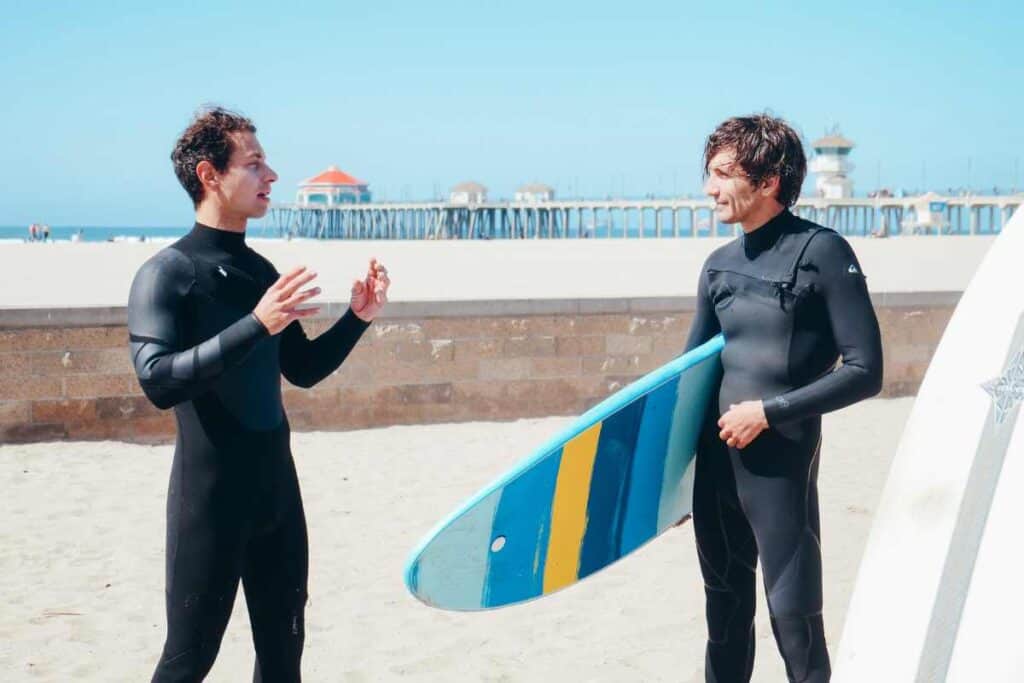
In this article, we will analyze the differences between the two phrases and determine the most appropriate choice.
Surfing is a popular and exhilarating activity that attracts enthusiasts from all over the world. Though it may seem easy to pick up a surfboard and hit the waves, learning to surf requires patience, practice, and perseverance.
The acquisition of surfing skills is not only a physical challenge, but also an opportunity to connect with nature and experience the ocean in a unique way. As such, understanding the proper terminology is an important aspect of fully embracing the surfing culture.

While some may argue that surfers partake in or “do” surfing, this depiction might not fully capture the essence of the activity.
A more accurate representation might be the phrase “go surfing,” as this expression suggests an immersive experience that extends beyond simply engaging in a sport or hobby.
To support this claim, we will delve into the linguistic and cultural significance of this phrase as well as explore the role of artificial intelligence in analyzing the use of these expressions.
Exploring Surfing: Key Concepts and Vocabulary
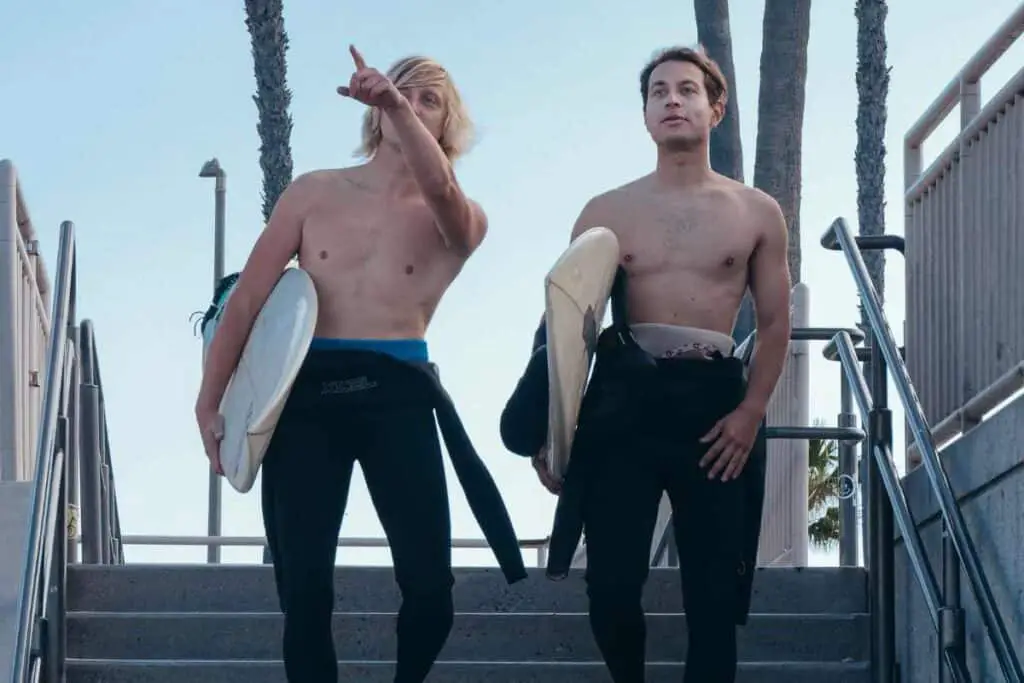
Understanding Surfing Slang and Jargon
The world of surfing offers a rich variety of slang and jargon that is often specific to the sport.
Surfers use this language to describe their experiences in the water and to communicate effectively with fellow surfers.
Some common slang terms include stoked (excited or happy), lineup (the area where surfers wait for waves), and wettie (wetsuit).
Here is a list of other surfer slang you might encounter:
- Bombora: a deepwater offshore reef break
- Booger: a bodyboarder
- Bro: brother, mate
- Burn: to drop in on someone or steal a wave without priority
- Carve: a sharp turn on the wave face
Introduction to Surfing Maneuvers
Surfing maneuvers refer to the different actions surfers perform while riding a wave.
Some of the key maneuvers include:
- Drop-in: The act of catching a wave and starting to ride it.
- Duck dive: A technique used to dive under a breaking wave to avoid being hit by it.
- Hang ten: A longboard maneuver where the surfer positions their toes on the nose of the board.
- Cutback: A sharp turn performed to change direction on the wave face.
- Bottom turn: A turn at the bottom of the wave to start trimming the optimal surf line.
Demystifying Surfing Directions
Understanding the directions in surfing is crucial for both beginners and experienced surfers.
The terms right, left, inside, and outside are commonly used to describe the position and movement of surfers and waves.
- Right: Refers to a wave breaking from the surfer’s perspective as they are riding it. A right-breaking wave would have the surfer moving towards their right side.
- Left: Opposite of a right-breaking wave, a left-breaking wave would have the surfer moving towards their left side.
- Inside: The part of the wave closer to the shoreline, where waves are typically smaller and less powerful.
- Outside: Refers to the area further out from the shoreline, where waves are larger and stronger. The outside is where the lineup is generally found.
It’s important for surfers to be familiar with these concepts and vocabulary to effectively communicate and navigate the world of surfing.
Helpful for beginners – How to Practice Surfing at Home?
Diving Deeper: Advanced Surfing Concepts
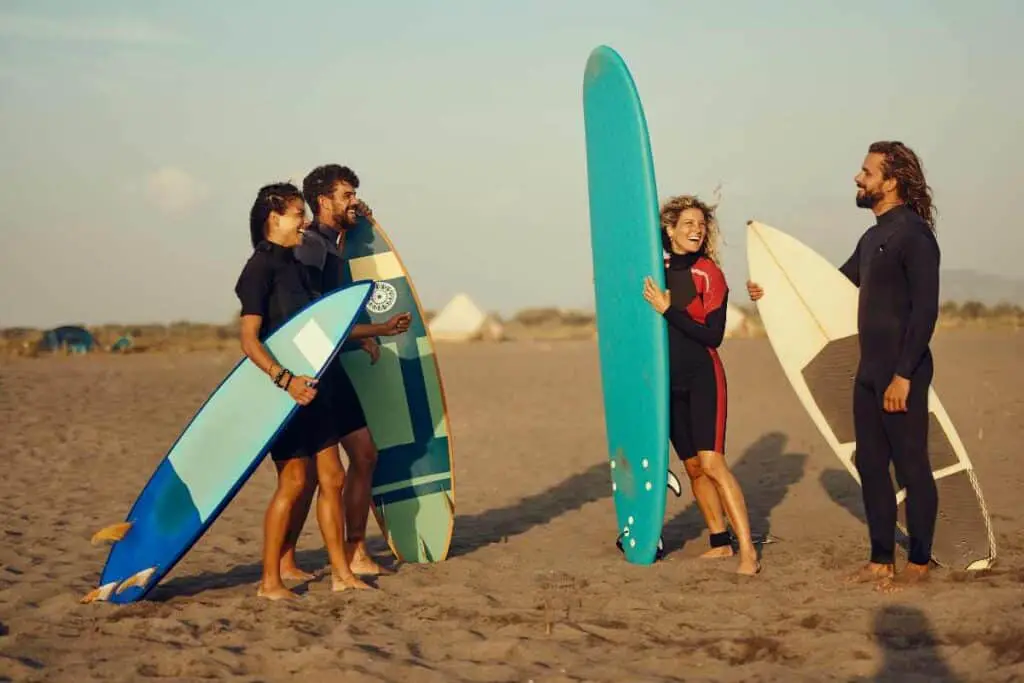
The Importance of Wave Anatomy
Understanding wave anatomy is crucial for surfers looking to improve their skills.
By learning the various parts of a wave, such as the peak, bottom, foam, whitewater, and barrel, surfers can better anticipate how a wave will behave and adjust their maneuvers accordingly.
The peak is the highest part of the wave, while the bottom is the lowest point. The barrel, also known as the tube, is the hollow section formed by a breaking wave, which advanced surfers may aim to ride inside for an exhilarating experience.
Surfing Styles: From Longboard to Aerial
There are many different surfing styles that cater to individual preferences and abilities.
Longboarding, for example, involves riding on a larger board with a more relaxed stance, perfect for cruising on smaller waves.
Aerial surfing, on the other hand, requires great skill and agility as surfers launch themselves into the air, performing gravity-defying maneuvers with their boards.
By understanding different styles and practicing them, surfers can continuously expand their skillsets.
- Longboard: A style popular for its relaxed cruising on gentle waves
- Aerial: The practice of launching into the air to perform board maneuvers
Understanding Surf Breaks

Surf breaks are locations where waves consistently form, providing surfers with the opportunity to ride them.
There are several types of breaks, such as beach breaks, reef breaks, and point breaks. Beach breaks occur where waves break over the sandy bottom, often resulting in shorebreaks and sandbars.
Reef breaks form over underwater rock formations, creating more powerful and often hollow waves. Point breaks, typically found along headlands or jetties, are known for long and even waves that are usually consistent and rideable.
By understanding the various types of surf breaks, surfers can better prepare themselves for the conditions they will encounter.
| Break Type | Description |
|---|---|
| Beach Break | Waves break over sandy bottom |
| Reef Break | Waves form over underwater rock formations |
| Point Break | Found along headlands or jetties, long even waves |
What’s In a Surfer’s Quiver
A surfer’s quiver refers to the collection of surfboards and gear that they have at their disposal.
A typical quiver may include multiple surfboards designed for different wave conditions, such as a longboard for small waves and a thruster for more powerful surf.
Other essential items include fins, leashes, and wax to provide necessary grip on the board’s surface.
By maintaining a well-equipped quiver, surfers can ensure they are prepared for a variety of conditions and continue to refine their surfing skills.
- Boards: Multiple surfboards designed for different wave conditions
- Fins: Attachments that provide direction and stability
- Leash: Safety equipment connecting the surfer to their board
- Wax: Applied to the board’s surface for grip
Facing Surfing Challenges
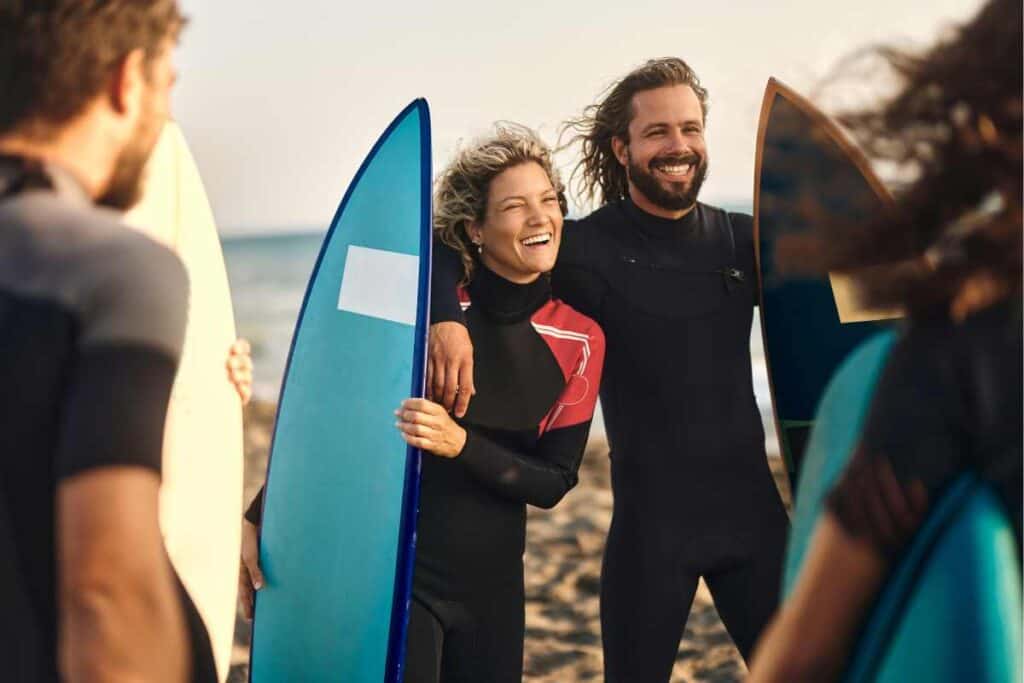
Tackling Big Waves and Dangerous Elements
Surfing, by nature, involves facing challenges in the water, especially when it comes to big waves.
These big waves, sometimes referred to as “bombs,” can be both exciting and dangerous. It’s essential for surfers to know their limits and gradually build up their skills before attempting to conquer larger waves.
Surfing in dangerous conditions, like strong currents or near sharp rocks, should be approached with caution. The risk of wipeouts is real, so surfers must be prepared for such outcomes and know how to react appropriately.
Cautionary Terminology: Kook and Drop In
There are certain terms in surfing that convey caution or even criticism towards fellow surfers.
A “kook” is someone who is inexperienced or doesn’t follow proper surfing etiquette. This label can be applied to those who put themselves or others at risk due to their lack of knowledge or disregard for safety rules.
Another term, “drop in,” refers to when a surfer steals a wave from another surfer who is already riding it. This action is frowned upon in the surfing community and can lead to dangerous collisions in the water.
The Role of Weather and Wind in Surfing
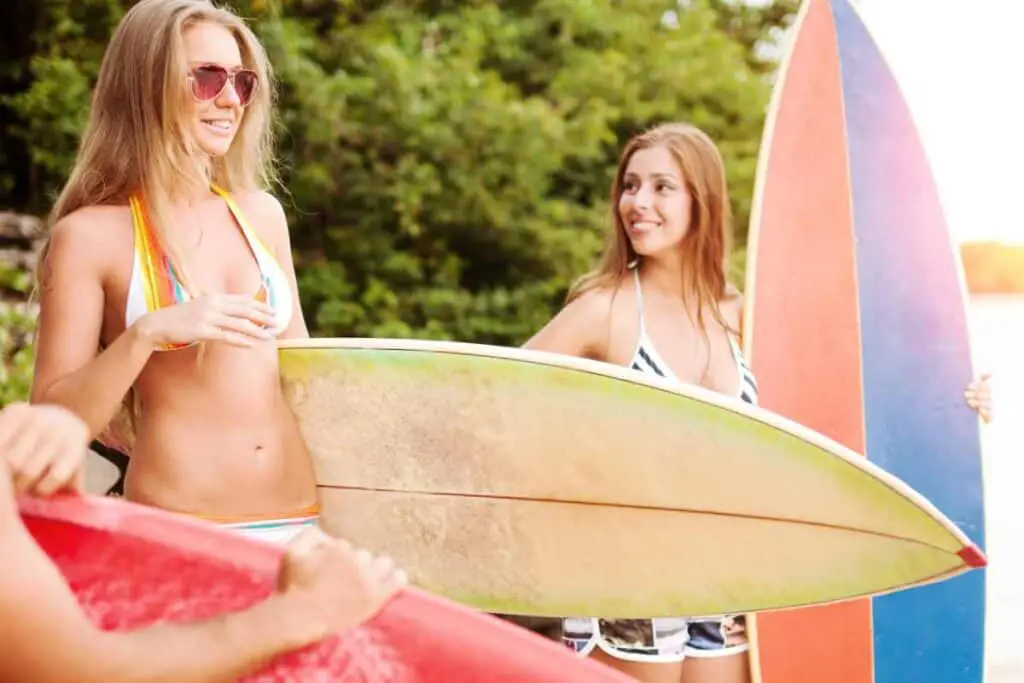
Weather and wind conditions play a significant role in the quality of the surfing experience.
The following are some important factors to consider:
- Onshore winds: These winds blow from the sea towards the shore and can create choppy, messy wave conditions.
- Offshore winds: Blowing from the land towards the sea, these winds help to groom the waves, forming cleaner face and pocket shapes more suitable for surfing.
- Swell: Swell refers to the series of waves that travel long distances across the ocean before reaching the shoreline. The size and direction of the swell can greatly impact the surf conditions.
Understanding the role of these factors is essential for surfers to navigate waves and find the best surf spots on any given day.
Preventing Surfing Mishaps: Caught Inside and Duck Dive
Some common surfing challenges, like getting “caught inside” or needing to perform a “duck dive,” can be prevented or managed with the right techniques.
When a surfer is caught inside, they are stuck in the area where waves are breaking, making it difficult to paddle out to the lineup.
To avoid this situation, surfers should learn to read the waves and identify channels or rip currents that can help them move through the break more easily.
The duck dive is a technique used to help surfers get under incoming waves while paddling out. By pushing their surfboard underwater as a wave approaches and reemerging on the other side, surfers avoid getting pushed back towards the shore.
Mastering this skill is crucial for staying safe in the water and maintaining control in challenging surf conditions.
A Peek Into The Surfing Culture

The Influence of Surfer Bro Culture
Surfing culture has its roots in the laid-back, sun-soaked lifestyle of coastal communities. Surfers are often perceived as cool, relaxed individuals who embody the spirit of adventure.
The term “bro” is often associated with surfers, referring to their close-knit friendships and camaraderie on and off the waves.
Groms or grommets, young surfers, aspire to become part of this surfer bro culture and learn from experienced surfers around them.
Expressions of Stoked and Shaka
Language plays a significant role in surf culture, expressing enthusiasm and excitement. For instance, surfers describe themselves as “stoked” when they are excited about a good surfing session or impressive wave conditions.
Another common hand gesture among surfers is the “shaka” or “hang loose” sign. It communicates friendly greetings, encouragement, or a relaxed attitude, capturing the surfer’s mindset. These terms and gestures illustrate the unique camaraderie that surfers share.
Understanding Surfing Competitions
Competitive surfing is an essential aspect of surf culture. In a typical surf contest, participants compete in heats, which are timed sessions of surfing.
Surfers are judged based on their performance, style, and maneuverability on the waves. The best performers advance to the next round, and the contest continues until a winner is declared.
Surf competitions foster a sense of community and encourage surfers to push the limits of their abilities.
| Term | Meaning |
|---|---|
| Heat | Timed session in a surf competition |
| Style | The fluidity and grace of a surfer’s movements |
| Maneuverability | Ability to control and change direction on the waves |
Exploring Surf Camps and Lessons
Surf camps and lessons provide opportunities for aspiring surfers to learn the sport and immerse themselves in the surf culture.
Surf camps offer a variety of programs, from beginner lessons to advanced training, often including surfboard rentals and accommodation.
Participants in these camps receive instruction from experienced surfers, fostering a deeper understanding of the techniques, etiquette, and culture of surfing. Through these experiences, surf camps play a pivotal role in preserving and promoting surf culture.
Frequently Asked Questions
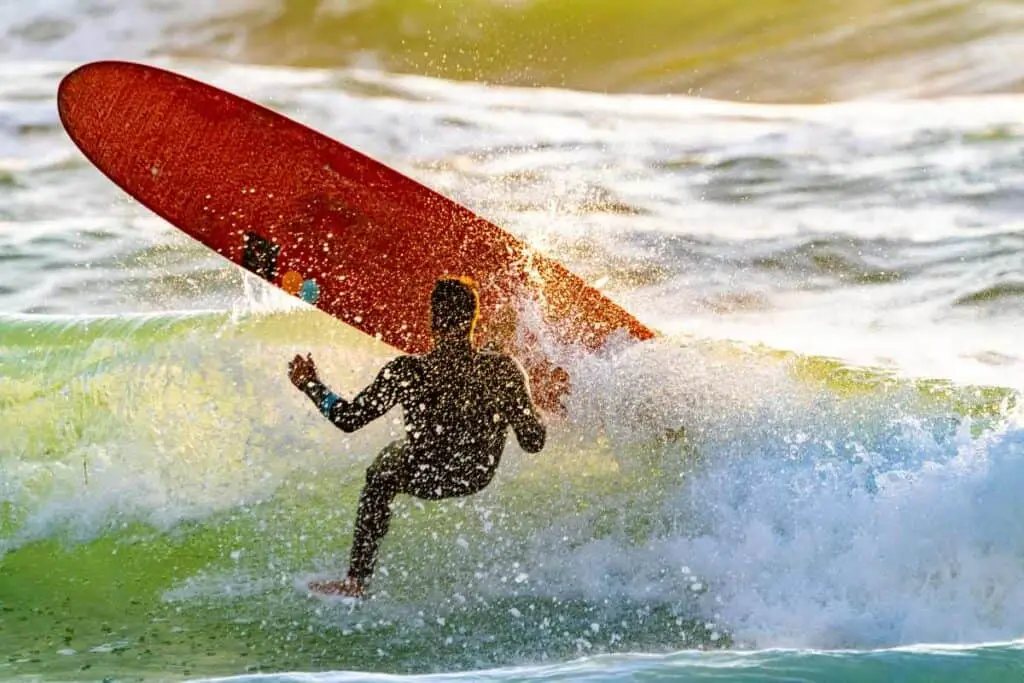
Do you say ‘do surfing’ or ‘go surfing’?
The correct phrase to use is “go surfing.” This is because the verb “go” is commonly used for activities where the action is in the gerund (-ing) form.
So, when referring to the activity, it’s appropriate to say “go surfing” rather than “do surfing.”
Is surfing considered a sport or hobby?
Surfing can be considered both a sport and a hobby, depending on the level of participation and commitment.
For some people, surfing is a casual pastime that they enjoy occasionally, making it a hobby. For others who compete in surfing events and dedicate significant time and effort to the activity, it is considered a sport.
What is the correct verb for participating in surfing?
The correct verb for participating in surfing is “surf.” For example, you can say, “He surfs every weekend” or “She is surfing right now.”
When talking about the intention to participate in the activity, use “go surfing,” as discussed earlier.
Do you ‘do’ or ‘play’ other water sports?
The verbs “do” and “play” can apply to different water sports. In general, you “play” a sport when it involves a ball, rules, and competition, such as water polo.
For other water sports that don’t involve a ball or structured competition, like swimming or diving, it’s more common to use “do.” However, some water sports, like surfing, use the verb “go”—as in “go surfing.”
What is the proper verb for martial arts like karate?
In the case of martial arts, such as karate, taekwondo, or jiu-jitsu, the appropriate verb to use is “do” or “practice.” For instance, you can say, “He does karate” or “She practices taekwondo.”
How do you differentiate between ‘do’, ‘play’, and ‘go’ in sports terminology?
In sports terminology, “do,” “play,” and “go” generally depend on the type of sport or activity. Use “play” for sports that involve a ball, rules, and competition, such as soccer, basketball, or tennis.
Use “do” for sports or activities that don’t involve a ball or structured competition, like gymnastics, swimming, or martial arts. Finally, use “go” for activities where the action is in the gerund (-ing) form, like “go surfing” or “go skiing.”
